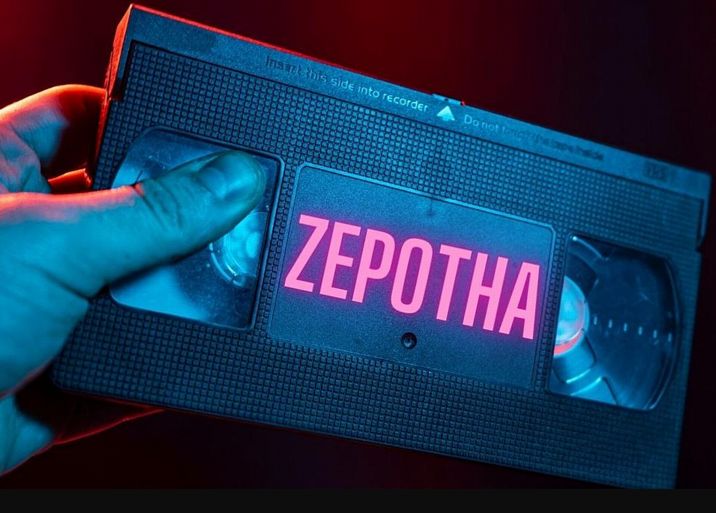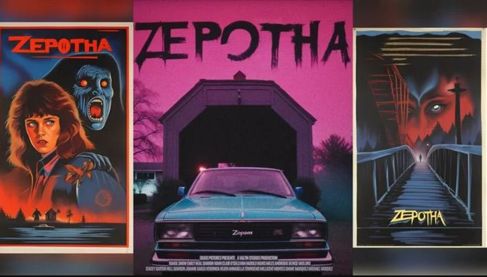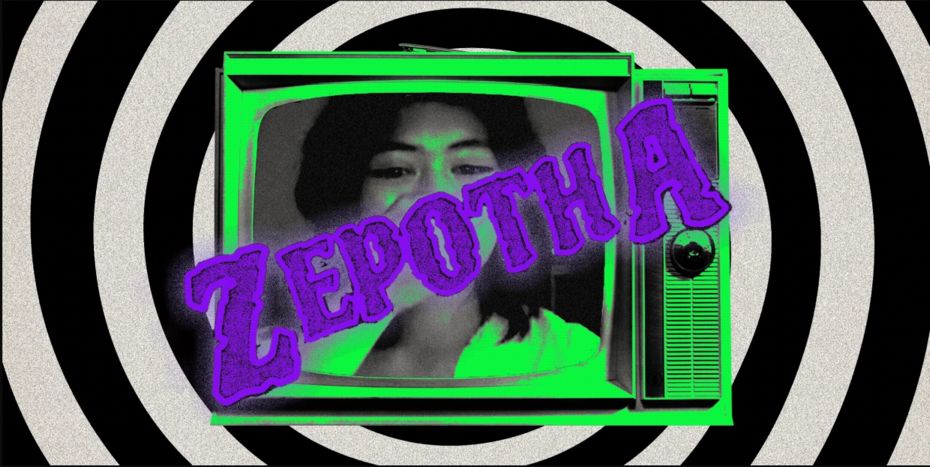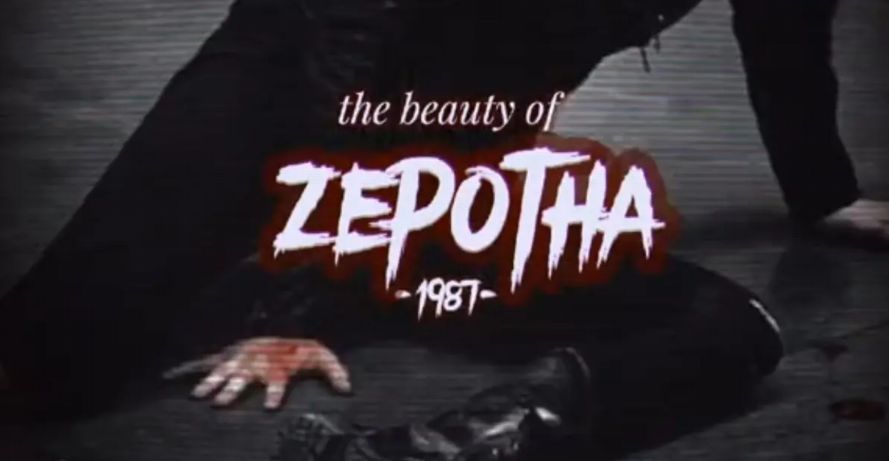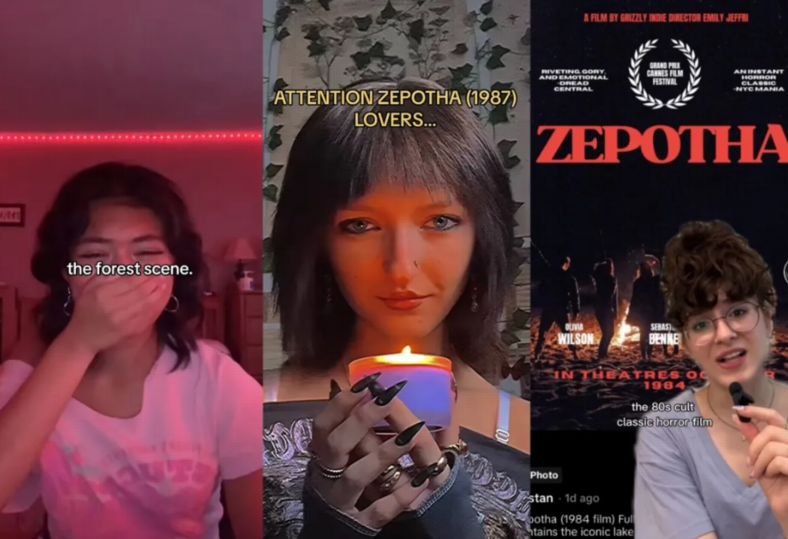Angel from Zepotha The Viral Phenomenon of a Non-Existent Horror Film on TikTok
The Genesis of Zepotha
The intriguing tale of “Zepotha,” a supposedly classic horror film from 1987, began not in the annals of cinema history, but within the creative confines of TikTok, a platform renowned for its ability to generate viral phenomena. The originator of this pseudo-myth was Emily Jeffri, a content creator known for her innovative and often whimsical explorations of social media’s power to shape narratives and play with the collective consciousness of her audience.
Jeffri’s initial foray into the Zepotha narrative was as cunning as it was simple. In a well-crafted video, she proposed a playful yet thought-provoking experiment: Could she and her followers convince the vast TikTok community that a completely fictional movie actually existed? The video outlined a plan to comment on various posts, suggesting that the people in them resembled characters from this non-existent 1980s horror film. The idea was to weave a narrative so compelling that it would spur curiosity and engagement across the platform.
“OK so new bit idea: what if we created a fake 80s horror movie called ‘Zepotha’ and started commenting ‘omg u look exactly like that one girl from Zepotha’ or ‘wait, u look exactly like ____ from Zepotha’ on every thirst trap we see,” Jeffri suggested in her video. The post quickly captured the imaginations of thousands, garnering over 3.6 million views and sparking a flood of comments, fan art, and further content that pretended Zepotha was a lost gem of 80s cinema. Followers and new fans alike started crafting intricate backstories for the characters and scenes of this fictional movie, creating a detailed tapestry of lore that felt both authentic and nostalgically eerie.
The spread of the Zepotha myth serves as a testament to the unique dynamics of viral content on social media. Engagement metrics skyrocketed as users, intrigued by the mystery and allure of discovering a hidden piece of pop culture, began to contribute their own ideas and content to the Zepotha story. The interactive nature of TikTok, coupled with its algorithm that favors high-engagement content, propelled Zepotha into a self-sustaining viral phenomenon. This collaborative narrative construction not only highlighted the platform’s capability to manufacture and amplify shared cultural experiences but also underscored the playful creativity of its user base, turning a simple video into a sprawling communal activity.
The Mandela Effect and Collective False Memories
The rapid acceptance and spread of the Zepotha story are underpinned by the Mandela Effect, an intriguing psychological phenomenon where a group of people recall events or details that never occurred. This effect, named after the widespread false memory of Nelson Mandela’s death in the 1980s, illustrates the complexities of collective memory and shared beliefs. The Mandela Effect has been observed in various instances, such as the common misremembering of the spelling of the Berenstain Bears as “Berenstein Bears,” or the number of United States—some falsely recalling 52 instead of 50.
Zepotha fits neatly into this framework as it demonstrates how a collective audience can come to remember and even passionately discuss a completely fabricated movie. The phenomenon taps into the communal aspects of human psychology, where shared narratives and repeated affirmations can create a collective belief in something that lacks factual basis. This is especially potent in the age of social media, where information—and misinformation—can spread rapidly and be reinforced through community engagement.
Psychological and social factors contribute significantly to the perpetuation of the Mandela Effect and, by extension, the Zepotha phenomenon. From a psychological standpoint, the human mind is prone to suggestibility, particularly when information comes from seemingly credible sources or is supported by community consensus. Socially, humans have a deep-seated need to belong and participate in shared cultural experiences, which can lead to embracing popular narratives, even fictional ones, as part of a community or cultural identity.
Moreover, the allure of nostalgia, particularly for the aesthetics and cultural artifacts of the 1980s, plays a crucial role in why Zepotha resonated so deeply with audiences. The decade is often romanticized in modern media, and the idea of rediscovering a forgotten piece of that era was tantalizing to many, blending the lines between reality and fiction, memory and imagination.
In this way, Zepotha not only serves as a playful experiment in social media’s power to create myths but also offers a deeper look into the human psyche and the mechanics of collective memory in the digital age. It highlights how myths can be constructed and how they evolve, not through traditional means like oral storytelling or literature, but through modern digital interactions that allow for rapid, widespread dissemination and collaborative myth-making.
Zepotha’s Cultural Impact
The cultural impact of the fictional movie “Zepotha” on TikTok has been significant, illustrating the power of collective imagination and the role of social media in modern folklore. As the myth of Zepotha grew, users across the platform began to generate a rich array of content, including fan art, detailed character backstories, and elaborate plot summaries, all of which added layers to the nonexistent film’s lore.
Fan art has played a pivotal role in visualizing the Zepotha universe. TikTok users, often talented artists, started creating and sharing images of key scenes and characters they imagined would be part of Zepotha. These artworks often featured a distinctly ’80s horror aesthetic—grainy VHS-quality images, retro clothing styles, and eerie, shadow-laden scenes typical of the genre during that era. This not only enriched the communal narrative but also helped solidify the film’s presence in the minds of those engaging with the content, blurring the lines between fiction and perceived reality.
Discussions about Zepotha’s characters took on a life of their own. Characters like Maxine, Alaine, Cole, Frankie, and Danny became almost real to those participating, with TikTok users debating their motives, backstories, and relationships as if they were part of a well-known cinematic canon. This phenomenon is indicative of how deeply immersive social media platforms can be in the storytelling process, allowing users not just to consume content but to become active creators and participants in its development.
Case studies of notable interactions further underscore Zepotha’s cultural footprint. For instance, a popular TikTok user posted a reaction video to discovering Zepotha, expressing genuine confusion and intrigue, which led to a flood of comments educating her on the film’s “history” and details. This interaction alone brought in thousands of new followers to the Zepotha myth, each adding their own insights or being swept up in the collective belief.
The impact of Zepotha also transcended TikTok, permeating other areas of pop culture. Mentions of the movie appeared in YouTube videos, Reddit threads, and even inspired segments on podcasts discussing internet culture and digital folklore. This cross-platform spread highlights how a single social media phenomenon can influence broader cultural discussions and contribute to the global digital lexicon.
Analysis of Social Media Dynamics
Understanding the dynamics of social media that allowed Zepotha to become a viral sensation offers valuable insights into how myths and false stories can spread in the digital age. TikTok, in particular, provides a fertile ground for such phenomena due to its unique algorithmic structure and the creative freedom it affords its users.
The role of engagement in the spread of the Zepotha myth cannot be overstated. TikTok’s algorithm favors content that generates high interaction rates—likes, comments, shares, and viewing time. When users began interacting with posts about Zepotha, whether by creating content or engaging with it, the algorithm recognized these interactions as signals of compelling content, thus promoting it to more users and creating a feedback loop that amplified the myth’s reach and believability.
User creativity is another critical factor. TikTok’s platform encourages creative expression in ways that other social media platforms do not, by offering tools like video editing, sound overlays, and direct responses to other videos. This suite of features enabled users to craft more engaging and convincing content about Zepotha, from fake trailers and scene reenactments to elaborate testimonials and reviews of the imaginary film.
When comparing Zepotha to other social media-driven myths or hoaxes, parallels can be drawn with incidents like the Momo Challenge or Slender Man—stories that also saw viral spread and significant engagement from the community, often resulting in real-world consequences. However, Zepotha stands out as a benign creation, serving more as a case study in digital storytelling and community interaction rather than causing harm.
The Zepotha phenomenon, therefore, exemplifies a modern digital folklore, showcasing the profound impact of social media dynamics on how stories are created, evolved, and believed by mass audiences. It serves as a reminder of the power of collective belief and the importance of critical engagement with online content, highlighting how easily and quickly fiction can be perceived as fact in the digital landscape. Through Zepotha, TikTok has not only entertained but also educated its users on the complexities of digital truth in our interconnected world.
The Role of Content Creators in Shaping Perception
Emily Jeffri, the architect of the Zepotha myth, is a testament to the profound influence content creators wield in the digital age. A content creator with a penchant for experimental social media projects, Jeffri’s initial intention was to explore how far a fictional narrative could be embedded into the collective consciousness of TikTok users. Her background in digital content creation, combined with a creative flair and understanding of social media dynamics, positioned her perfectly to launch this unique experiment.
Jeffri’s motivation for creating Zepotha stemmed from a curiosity about the power of suggestion and community engagement on social media platforms. She wondered whether a completely fabricated story could gain traction and how the narrative could evolve through user interaction. This experiment was not just about creating a viral sensation; it was a deeper inquiry into the mechanics of belief, perception, and the viral nature of information on the internet.
The role of content creators like Jeffri raises important questions about the responsibilities and ethical considerations inherent in their influence. As architects of information that can reach millions, creators have the power to shape perceptions and beliefs significantly. The Zepotha phenomenon underscores the need for a balanced approach to content creation, where creativity and engagement are tempered with an awareness of the impact such content can have. While Zepotha was a benign narrative experiment, it illustrates how easily misinformation or harmful narratives could spread under similar circumstances.
Content creators, therefore, carry a responsibility to understand the potential ramifications of their creations. They must navigate the fine line between creative expression and the ethical implications of their influence, particularly in an era where information can be disseminated globally in seconds. Their role in shaping narrative and belief systems on platforms like TikTok is monumental, as they can mold not only media consumption patterns but also societal and cultural perspectives.
Community Interaction and Response
The community’s engagement with Zepotha was instrumental in evolving the lore of this nonexistent movie. TikTok’s interactive nature allowed users not just to consume the content created by Jeffri but to become co-creators of the Zepotha narrative. Each comment, video response, and piece of fan art contributed to a richer, more detailed story, demonstrating the platform’s collaborative potential.
Users took to various forms of interaction to express their engagement with the Zepotha concept. Many embraced the role of amateur filmmakers, creating scenes and dialogues they imagined could be part of Zepotha. Others assumed the role of critics, reviewing the fictional film and discussing its impact on the horror genre. This level of creative output from the community not only perpetuated the myth but also enriched it, giving it a multi-dimensional quality that made it seem more real.
The feedback loop between creators and the audience is a critical component of sustaining such a myth. Jeffri’s initial posts acted as a catalyst, but it was the community’s enthusiastic response that truly brought Zepotha to life. Each interaction reinforced the narrative, encouraging new users to explore and add to the story. This cycle of creation and reinforcement is a powerful mechanism on social media, where content can quickly evolve as it is passed through various hands, each adding their own interpretation and flavor.
This communal interaction highlights the unique ecosystem of TikTok, where users are not mere passive recipients of content but active participants in its creation. The platform’s design encourages this kind of participatory culture, making it an ideal breeding ground for viral phenomena like Zepotha. Moreover, it illustrates the collective power of online communities to create and sustain complex narratives, showcasing the social dynamics that allow myths to flourish in digital spaces.
In conclusion, the Zepotha saga provides a rich case study in the dynamics of social media storytelling, the influence of content creators, and the active role of communities in shaping digital narratives. Through this fictional movie, we see the convergence of creativity, technology, and human interaction, painting a comprehensive picture of the potential and challenges of our interconnected digital world.
The Reality of Virtual Lore
The case of Zepotha invites us to ponder the philosophical implications of virtual lore and its perception as reality. In a world increasingly dominated by digital interactions, the line between truth and fiction becomes ever more tenuous. The Zepotha phenomenon exemplifies how virtual narratives can manifest with as much power as those grounded in reality, influencing perceptions and behaviors on a mass scale.
The digital age has significantly blurred these lines between truth and fiction. Social media platforms, with their rapid dissemination capabilities and algorithms that prioritize engagement over accuracy, often create environments where fictional narratives can be as influential as factual reporting. This scenario raises critical questions about the nature of truth and the ethical responsibilities of those who create and disseminate information online. As virtual lore like Zepotha can be crafted and accepted as part of our cultural fabric, we must consider the implications of such phenomena on our understanding of history, identity, and community.
@angelarrochista Replying to @Mina ⚯͛ #zepotha
Looking forward, the potential for similar phenomena to emerge is vast. The increasing sophistication of technology, like deepfakes and AI-driven content creation, could further complicate our ability to discern real from fake. As virtual and augmented reality technologies become more pervasive, the creation of entirely immersive fictional worlds may become commonplace, challenging our perceptions and potentially altering our relationship with reality itself.
The phenomenon surrounding “Angel from Zepotha” encapsulates a pivotal moment in the evolution of digital culture, highlighting the profound impact of social media on contemporary storytelling and myth-making. Originating as a fictional horror film in a social media experiment, Zepotha not only achieved viral status but also sparked widespread participation in a narrative exercise that many believed to be genuine. This saga provides deep insights into the mechanics of viral phenomena, the influence of collective beliefs, and the transformative role of social media in shaping modern cultural narratives.
Examining what Zepotha reveals about current internet culture and human psychology unveils significant aspects of our era. The rapid adoption and dissemination of the Zepotha narrative underscore humanity’s enduring penchant for storytelling and myth-making, qualities that have long been foundational to societal development but now manifest in distinctly digital forms. Platforms like TikTok serve as contemporary communal spaces where stories are shared, reshaped, and amplified, profoundly influencing the collective consciousness of their vast audiences.
Moreover, Zepotha illustrates the enduring allure and multifaceted functions of myths in society. Whether ancient or digital, myths entertain, educate, warn, inspire, and foster community bonds. In today’s digital age, stories like Zepotha continue to fulfill these roles, albeit at a scale and speed previously unimaginable.
Ultimately, the Zepotha phenomenon underscores the transformative power of social media in modern storytelling. As we navigate the complexities of this digital era, the narratives we create, consume, and internalize shape our shared reality. Zepotha thus emerges not merely as a fictional horror film that never existed but as a reflection of our digital age—a compelling testament to the intersection of ancient storytelling instincts with the limitless potential of the internet.
EN -Bray Wyatt Hawaiian Shirt Honoring the Evolution and Emotional Journey
Washington County Attorney Ruby Franke Uncovering Allegations of Child Abuse
Cecily Bauchmann Son Ran Over Incident Navigating Family Safety
Astrological Insights into Control and Charisma: A Comprehensive Analysis of Ruby Franke Birth Chart
The Complex Tale of Chad Daybell Jail and Infamous Idaho Home
Infamy for Sale The Chad Daybell House Address and Its Notorious Idaho Home
Bray Wyatt Religious the WWE Star’s Beliefs Through His Tattoos and Persona
